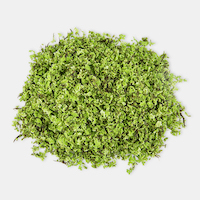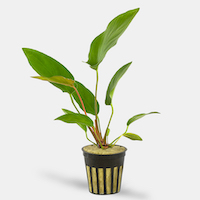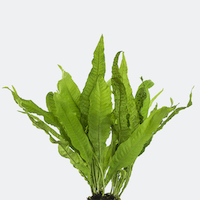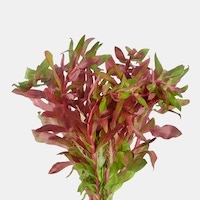Anatomy of Live Aquarium Plants.
Posted by Artur Wlazlo on 23 Sep 2019
While there are many varieties of aquatic plants, including stem plants, floating plants, mosses or those that need gravel to flourish and those - like Anubias - that don’t, we still can divide plant’s anatomy into four distinct areas: roots, stem, leaves and, let’s not forget the most beautiful and noticeable part of the plants, flowers.
PLANT ROOTS. Let’s start from the bottom. Plant roots serve to satisfy three basic needs. First, they anchor or secure the plant in place like substrate, driftwood or even rocks. Anubias, for example, use their roots to attach themselves to driftwood or rocks. Some plants like Echinodorus, on the other hand, have long root structures which provide superb anchorage in gravel or sand-like substrates. Secondly, aquarium plant roots allow the plants to absorb nutrients, including water, CO2, nitrogen, etc., which they then transport to the rest of the plant. Floating plants also have roots. Their roots are not designed to secure them in place; rather, their role is strictly confined to collecting nutrients from the water column. Floating aquarium plant roots are often long and thin and very efficient in absorbing nutrients. They also provide great hiding places for fry or smaller fish. Healthy plant roots are the necessary foundation for strong and beautiful aquarium plants.
PLANT STEMS. OK, let’s continue going up. Most aquatic plants have stems. Like a skeleton for a human, stems provide support to the plant and allow it to grow upright. Unlike their terrestrial cousins, aquarium plants’ stems are not as strong - they don’t need to be as the water itself provides some support as well - so some care must be taken while handling them. Like roots, stems transport nutrients to the rest of the plant but also can act as storage for nutrients. For example, while it may not be obvious, rhizomes and tubers found in many species of Anubias, Echinodorus and Aponogetons are especially developed stems which store the excess nutrients. Plants can draw on these stored nutrients when they don’t find them available in their environment. So here’s a useful tip: if you keep plants that have rhizomes like anubias, pay attention to how their rhizomes look. If they look poorly developed or are decaying, these are warning signs that your aquatic plants are not receiving enough nutrients.
PLANT LEAVES. They are - many of us would say - what defines a plant. Aquarium plants use leaves to capture the sun's energy to use it in the process of photosynthesis. Live aquarium plants produce leaves in different shapes, colors and sizes. Just check the vast selection of plants on our website at modernaquarium.com and you’ll be amazed at the variety of live aquatic plants available. Many aquarium plants are capable of growing leaves both under and above the water’s surface. Those grown above the water usually will have slightly different shape and even color from those the same plant will grow under water.
PLANT FLOWERS. When your aquarium plants flower then you know you’re doing something right. Flowers are outward signs that your aquarium plants are doing well. But don’t be discouraged if your plants do not flower. Also, even if your plants don’t flower, that’s not necessarily a sign that they’re doing bad. In fact, many - perhaps
 even most - plants will not flower in your aquarium. Many aquatic plants will produce flowers above the water surface so if your tank is covered, it is not likely that those plants will produce flowers.
even most - plants will not flower in your aquarium. Many aquatic plants will produce flowers above the water surface so if your tank is covered, it is not likely that those plants will produce flowers.
There are many varieties of aquarium plants to choose from. They differ in size, color, shape of their leaves and root structures. Our advice: do not be afraid to experiment with different plants and choose those that suits your needs most esthetically and practically. There’s nothing more rewarding than a beautifully planted tank.




